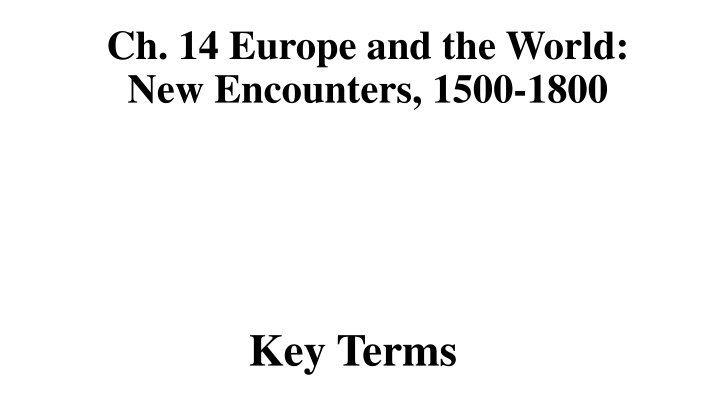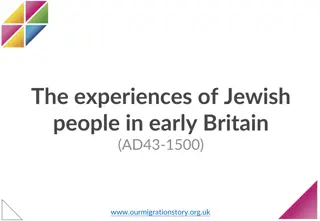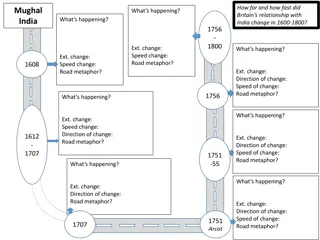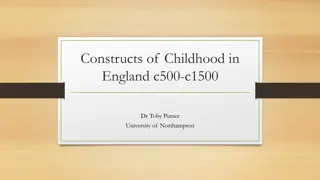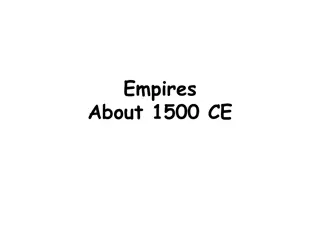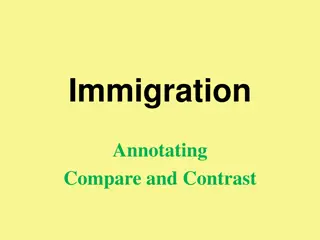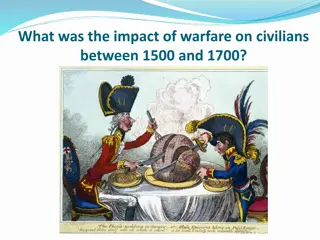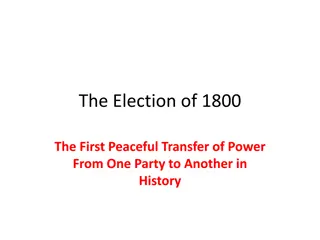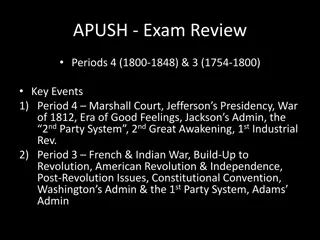Europe and the World: New Encounters, 1500-1800 Key Terms
This content highlights key terms and concepts related to the encounters between Europe and the world from 1500 to 1800. It covers topics such as portolani, conquistadors, encomienda, triangular trade, Middle Passage, Columbian Exchange, price revolution, and joint-stock companies.
Download Presentation

Please find below an Image/Link to download the presentation.
The content on the website is provided AS IS for your information and personal use only. It may not be sold, licensed, or shared on other websites without obtaining consent from the author.If you encounter any issues during the download, it is possible that the publisher has removed the file from their server.
You are allowed to download the files provided on this website for personal or commercial use, subject to the condition that they are used lawfully. All files are the property of their respective owners.
The content on the website is provided AS IS for your information and personal use only. It may not be sold, licensed, or shared on other websites without obtaining consent from the author.
E N D
Presentation Transcript
Ch. 14 Europe and the World: New Encounters, 1500-1800 Key Terms
portolani (p. 402) Charts of landmasses and coastlines made by navigators and mathematicians in the thirteenth and fourteenth centuries.
conquistadors (p. 407) conquerors . Leaders in the Spanish conquests in the Americas, especially Mexico and Peru, in the sixteenth century.
encomienda (p. 410) In Spanish America, a form of economic and social organization in which a Spaniard was given a royal grant that enabled the holder of the grant to collect tribute from the Indians and use them as laborers.
viceroy (p. 410) The administrative head of the provinces of New Spain and Peru in the Americas.
audiencias (p. 410) Advisory groups to viceroys in Spanish America.
triangular trade (p. 413) A pattern of trade in early modern Europe that connected Europe, Africa, and the Americas in an Atlantic economy.
Middle Passage (p. 413) The journey of slaves from Africa to the Americas as the middle leg of the triangular trade.
Columbian Exchange (p. 425) The reciprocal importation and exportation of plants and animals between Europe and the Americas.
price revolution (p. 427) The dramatic rise in prices (inflation) that occurred throughout Europe in the sixteenth and early seventeenth centuries.
joint-stock company (p. 428) A company or association that raises capital by selling shares to individuals who receive dividends on their investment while a board of directors runs the company.
mercantilism (p. 428) An economic theory that held that a nation s prosperity depended on its supply of gold and silver and that the total volume of trade is unchangeable. Its adherents therefore advocated that the government play an active role in the economy by encouraging exports and discouraging imports, especially through the use of tariffs.
